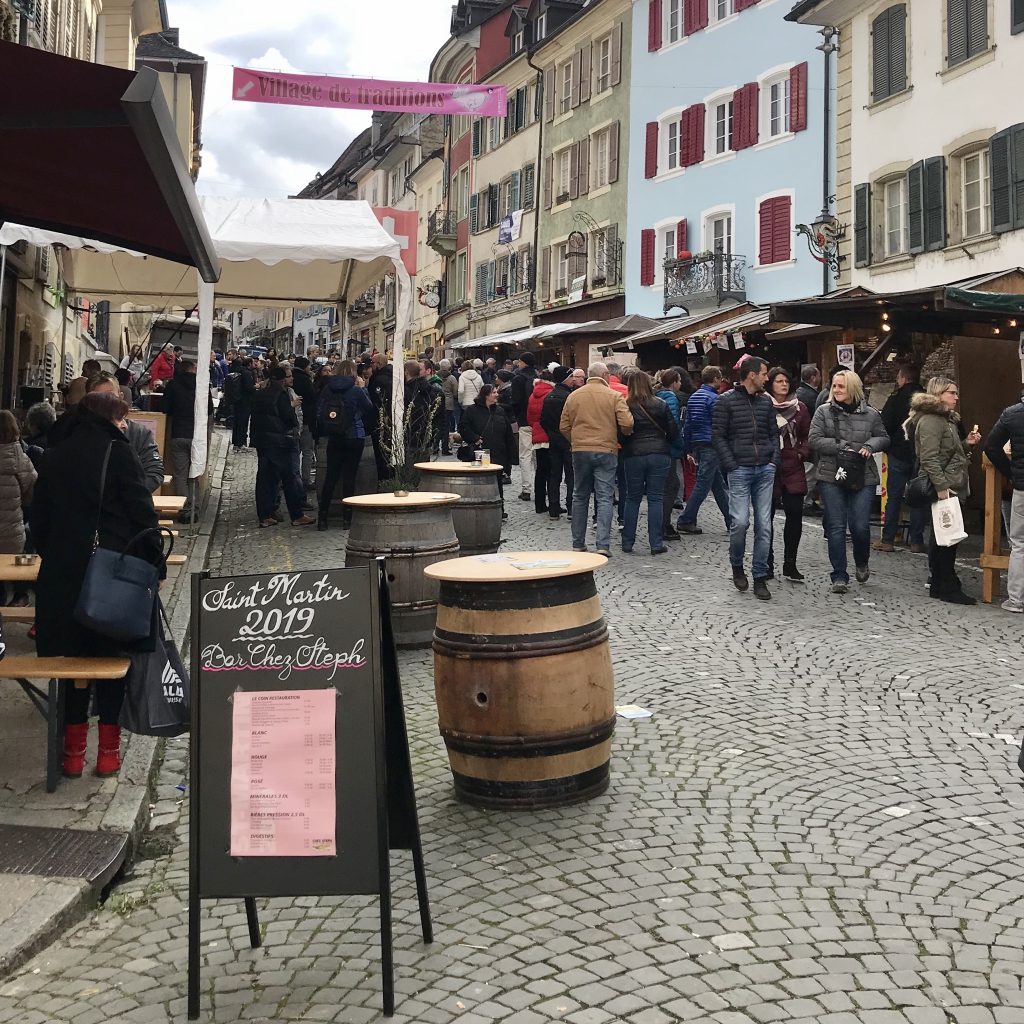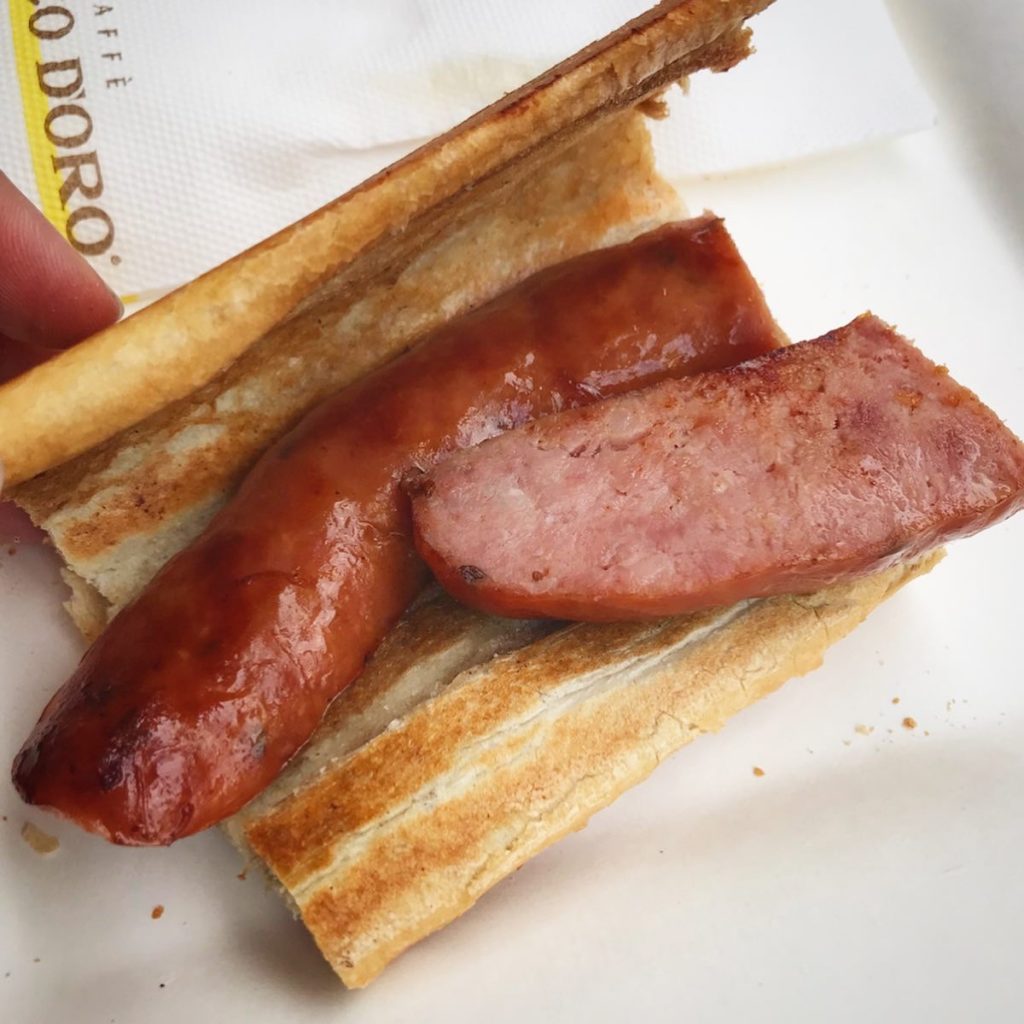Name: Saucisse d’Ajoie IGP
Region: The district of Porrentruy

History:
The saucisse d’Ajoie is a particularly famous smoked pork saucisse spiced with garlic and cumin seeds. The IGP protected saucisse comes only from the Porrentruy district in the Jura, while others made in the Jura but not in the Porrentruy area are often referred to as “household” or “cumin” saucisse. It is uncertain how long this particular saucisse has been made this way; claims go back to the 15th century, but the first evidence comes from written recipes and accounts in the 19th century.
Today, the saucisse d’Ajoie is eaten year round, but particularly on St. Martin’s Day. The St. Martin’s festival is thrown every year around November 11th, and in Porrentruy, this festival is dedicated to the pig. A popular variety of the saucisse d’Ajoie, the thinner croquante d’Ajoie, is toasted and served on bread.

How it’s made:
Meat: The saucisse d’Ajoie is made using 66% lean pork and 33% fatty pork, such as pork belly or collar. Optional: There is also an allowance to use up to 10% ground beef if desired.
Spices: Salt (1.6-2.0%), whole cumin, ground white pepper, garlic, and nitrates. Optional: Nutmeg and red wine, as long as they don’t dominate the flavor of the saucisse.
Processing: The meat is allowed to be pre-salted before it is ground if it is desired. The meat is ground on a medium grind (5-8mm), traditionally done with a bowl cutter on slow speed. The seasonings are added, and then the mixture is kneaded so that the grain is still visible. The mixture is stuffed into hog casings with a diameter of 32-36 mm. If the coquante version is being made, they are stuffed into sheep casings with a diameter of 20-22 mm.
If the meat has not been pre-salted, it is allowed to hang for 2 hours after stuffing. After this point, the saucisse is smoked with soft wood with maximum temperature of 40 C for at least 24 hours.
The final product should have a pleasant smell of light smoke and be golden brown in outward appearance. Once cut into, it should be a pinkish red, homogenous, with a well-defined 5-8 mm grain.
Traditionally, when these saucisse were made they were kept in the family attic. They were eaten over time, so the first batches were cooked and eaten fresh; when they got down to the later batches, they had been dried over time, and so were eaten raw. The dried version is not included in the IGP protection, but is still being done by those who uphold the tradition and can be found in markets.

Timing: The saucisse d’Ajoie is enjoyed year round, but particularly on St. Martin’s Day, around the 11th of November.

How it’s eaten:
The saucisse d’Ajoie is traditionally cooked in water around 80C, simmering but not quite boiling. It is served with sauerkraut, root vegetables, or green beans. Grilling the saucisse has become very popular with families who have decided to have a picnic during the nice weather of summer and fall. In recognition of this fact, butchers have developed the croquante version, which is thinner and easier to grill.

How I learnt about it:
The saucisse d’Ajoie in particular brings back really good memories for me, because my Dad came to visit me in Switzerland and we traveled to Porrentruy for the St. Martin’s Feast on my birthday.

We had a blast catching up, walking through the market place, sampling all of cured meats and local foods, listening to the traditional music, looking t pig inspired art, and learning about local cooking methods.

We shared a croquante d’Ajoie, saucisson sec and Tête de Moine, le gâteau aux patates, les marrons chauds, plenty of vin chaud, and had a fantastic time. It will be a birthday to remember for the ages.

The DIY
*Note: Please use common sense. Make sure the spreadsheet is working properly for you and double check any calculations that don’t seem right.
Sources:
https://www.aop-igp.ch/fileadmin/Dokumente/Pflichtenhefter/Saucisse_d_Ajoie_Cahier_des_charges.pdf
https://www.aop-igp.ch/fr/saucisse-dajoie-igp/
https://www.patrimoineculinaire.ch/Produit/Saucisse-dAjoie-IGP/21
http://www.boucherievallat.ch/index.php?option=com_content&view=article&id=15&Itemid=17